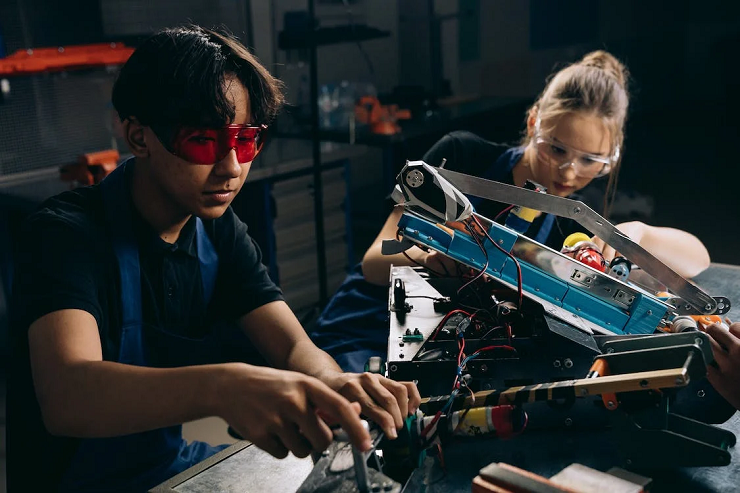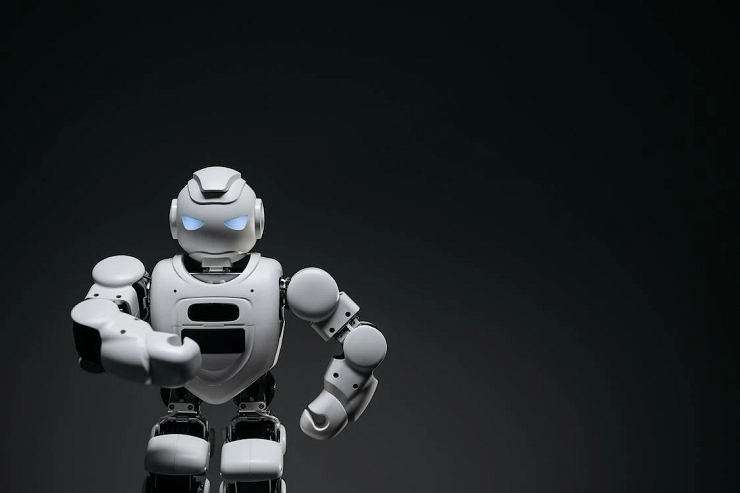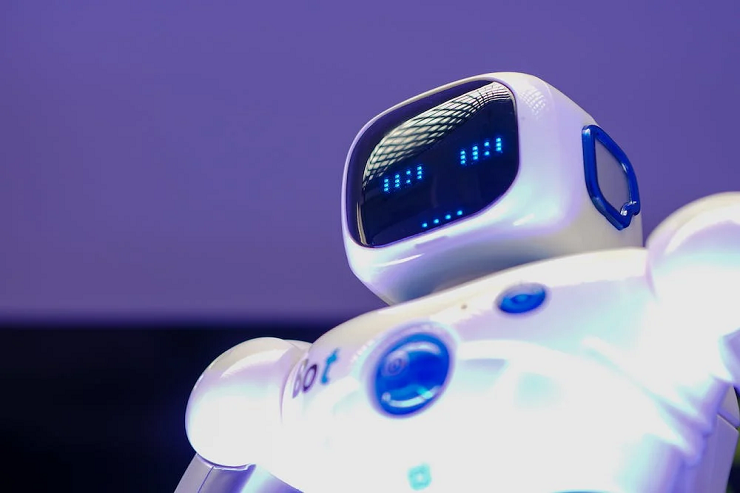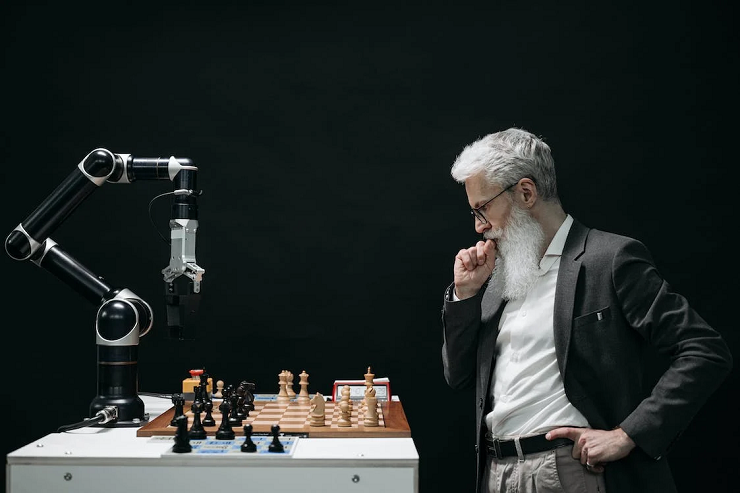
Artificial intelligence (AI) and robotics are rapidly evolving fields intersecting in numerous ways. Integrating AI into robotics transforms how we think about machines and their capabilities. This blog post will explore the intersection of artificial intelligence and robotics and how they change our world.
What Is Artificial Intelligence?
Artificial intelligence refers to the ability of machines to perform tasks that typically require human intelligence. AI is achieved by programming machines with algorithms and rules that allow them to perform various cognitive tasks, such as learning, reasoning, and problem-solving. AI has been used in multiple applications, including natural language processing, image and speech recognition, decision-making, and predictive analytics.
What Is Robotics?
Robotics is a field of study that deals with robot design, construction, and operation. Robots are programmable machines that perform various tasks automatically, including movement, manipulation, and control. Robotics is a multidisciplinary field encompassing mechanical engineering, electrical engineering, computer science, and control systems engineering.
1. The Intersection Of AI And Robotics
The intersection of AI and robotics is creating new opportunities for machines to perform tasks once thought to be the exclusive domain of humans. By combining AI with robotics, machines can learn from their experiences, make decisions, and adapt to new situations. This has led to the development of intelligent robots that can perform complex tasks in a wide range of environments.

One example of intelligent robots is autonomous vehicles. Autonomous vehicles use AI to navigate roads, avoid obstacles, and make real-time decisions. These vehicles are equipped with sensors and cameras that allow them to perceive their environment, and they use machine-learning algorithms to make decisions based on the data they collect.
Another example of intelligent robots is collaborative robots or cobots. Cobots are designed to work alongside humans in various settings, including manufacturing, healthcare, and logistics. These robots are equipped with sensors to detect human presence and adjust their movements accordingly. Cobots use AI to learn from human interactions and improve their performance over time.
2. AI And Robotics In Healthcare
AI and robotics are transforming the healthcare industry by providing new ways to diagnose, treat, and prevent diseases. Robotics is used in surgery to perform complex procedures with greater precision and accuracy. Robotic surgery systems use AI to interpret data from imaging technologies, such as MRI and CT scans, and provide real-time feedback to surgeons.
AI is also being used to develop new drugs and treatments for diseases. Machine learning algorithms can analyze large volumes of medical data to identify patterns and correlations humans may miss. This has led to the development of personalized medicine, where treatments are tailored to an individual’s genetic makeup and medical history.
3. AI And Robotics In Manufacturing
AI and robotics are transforming the manufacturing industry by improving efficiency and productivity. Robotics is used in manufacturing to perform repetitive tasks, such as assembly and welding, with incredible speed and accuracy. These robots can work around the clock, without the need for breaks, and can be reprogrammed to perform different tasks as needed.

AI is being used in manufacturing to optimize production processes and reduce waste. Machine learning algorithms can analyze data from sensors and other sources to identify patterns and anomalies humans may miss. This has led to the development of predictive maintenance, where machines are maintained before they fail, reducing downtime and increasing productivity.
Challenges And Opportunities
The integration of AI into robotics is creating new opportunities for machines to perform tasks once thought to be the exclusive domain of humans. However, this integration also presents unique challenges, including ethical considerations, safety concerns, and the potential for job displacement.
- As machines become more intelligent, there is a risk that they may be used to replace human workers, particularly in industries affected by automation. This raises questions about AI and robotics’s social and economic impact on society. It is essential to ensure that the benefits of these technologies are shared fairly and do not exacerbate existing inequalities.
- In addition to these challenges, numerous opportunities are presented by the integration of AI and robotics. For example, developing intelligent robots could lead to new jobs and industries that have yet to be imagined.
- Furthermore, using robots in industries such as healthcare and manufacturing could improve safety and reduce costs, leading to better patient and company outcomes.
- Another potential benefit of integrating AI and robotics is the ability to address global challenges, such as climate change and food security. Intelligent robots could monitor and manage the environment, improving sustainability and reducing carbon emissions. Robots could improve crop yields and reduce agricultural waste, helping feed a growing global population.

Conclusion
The intersection of artificial intelligence and robotics is transforming the way we think about machines and their capabilities. By combining AI with robotics, machines can learn from their experiences, make decisions, and adapt to new situations. This has led to the development of intelligent robots that can perform complex tasks in a wide range of environments.
AI and robotics are already being used in industries such as healthcare and manufacturing, and they present numerous opportunities for addressing global challenges such as climate change and food security. However, these technologies also offer challenges, including ethical considerations, safety concerns, and potential job displacement.
It is essential to ensure that the benefits of AI and robotics are shared relatively and used responsibly and ethically. By doing so, we can harness the potential of these technologies to improve our lives and address some of the most pressing challenges facing humanity today.
